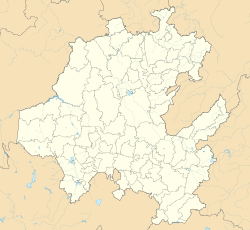| El Doctor Formation | |
|---|---|
| Stratigraphic range: Albian-Cenomanian ~ | |
| Type | Formation |
| Sub-units | La Negra Member |
| Lithology | |
| Primary | Lime mudstone |
| Location | |
| Coordinates | 20°48′N99°18′W / 20.8°N 99.3°W |
| Approximate paleocoordinates | 18°54′N64°30′W / 18.9°N 64.5°W |
| Region | Hidalgo |
| Country | Mexico |
The El Doctor Formation is a geologic formation in Mexico. It preserves fossils dating back to the Albian and Cenomanian stages of the Cretaceous period. [1] Ammonite fossils show that age of Late Albian is more likely. [2]

